Growing Christmas Cactus: Find The Right Room With Ideal Light And Moisture Levels
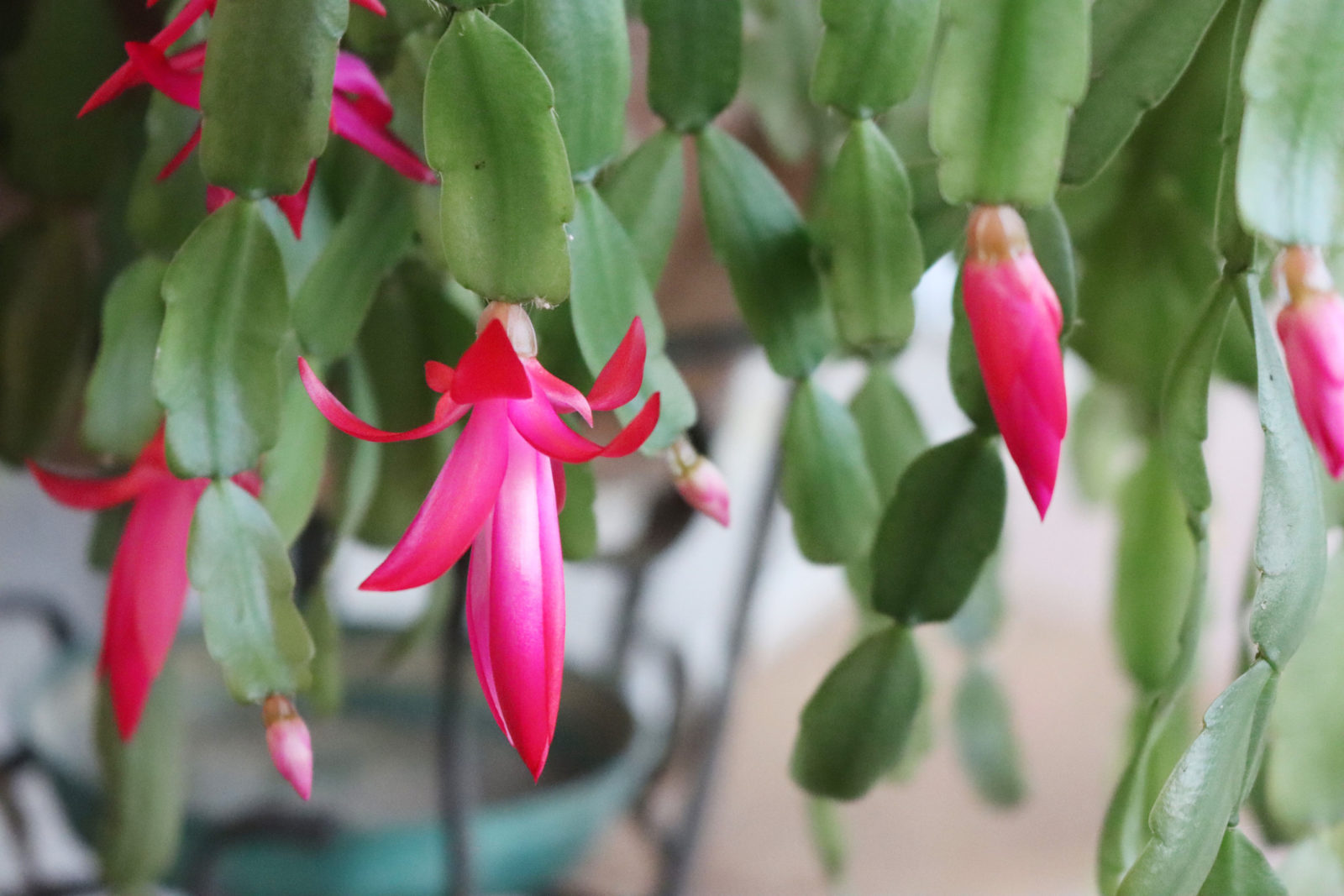
HOUSEPLANTS > SCHLUMBERGERA

Ed is a horticultural therapist, professional gardener and writer. Ed has a BSc in Occupational Therapy from Coventry University and a Diploma in Social and Therapeutic Horticulture (DipSTH) via Thive, the RHS and Pershore College. Ed runs a community kitchen garden in West Sussex, where he leads horticultural therapy sessions.
Reviewed By COLIN SKELLY

Colin is a Horticulturist and Horticultural Consultant with experience in a range of practical and managerial roles across heritage, commercial and public horticulture. He holds the Royal Horticultural Society’s Master of Horticulture award and has a particular interest in horticultural ecology and naturalistic planting for habitat and climate resilience.
IN THIS GUIDE
SCHLUMBERGERA GUIDES
Schlumbergera, or Christmas Cactus as they are far more commonly known, are wonderful houseplants that can brighten up the indoors during the winter months.
The Christmas cactus earned its familiar name as it tends to flower between November to January and is easy to care for, making it a popular gift during the festive season.
Overview
| Botanical Name | Schlumbergera |
| Common Name(s) | Christmas Cactus / Winter Cactus |
| Plant Type | Cacti |
| Native Area | Brazil |
| Hardiness Rating | H1B |
| Foliage | Evergreen |
| Flowers | Exotic and bell-shaped |
| When To Plant | Any time |
| When To Prune | January – March |
Sunlight
Preferred
Partial Shade
Exposure
Sheltered
Size
Height
0.5M
Spread
0.5M
Bloom Time
Winter
Soil
Preferred
Sand or loam
Moisture
Moist but well-drained
pH
Acidic to neutral
Christmas Cacti are tender plants and generally one of two species of Schlumbergera, either S. truncata or S. buckleyi.
Both are very similar, but with subtle differences between their foliage and flowers.
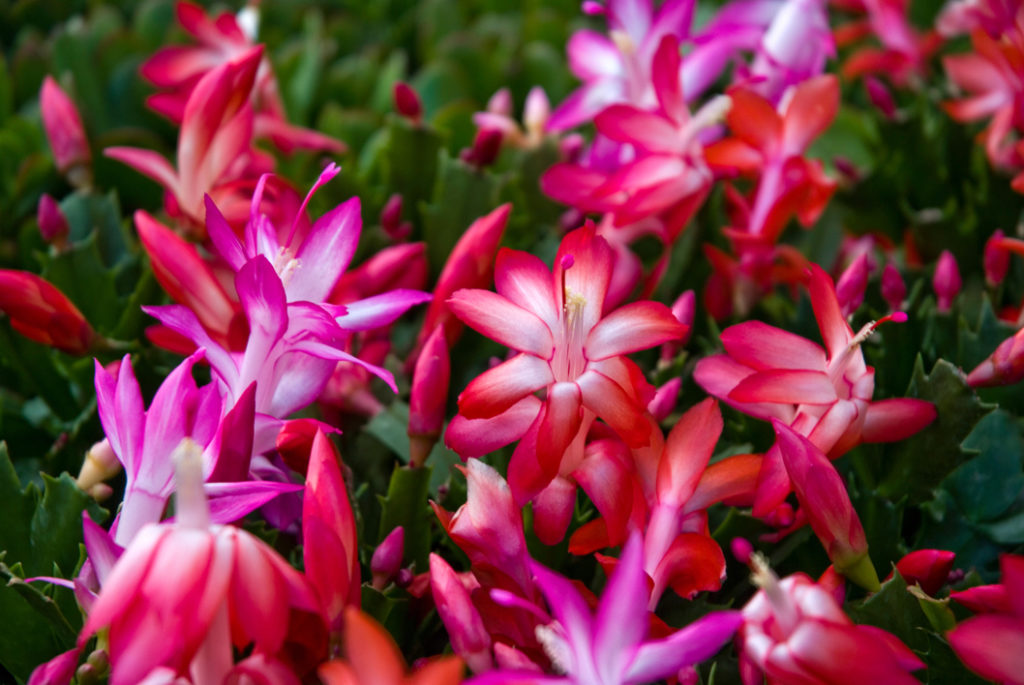
Schlumbergera originates from the wooded areas of Brazil and grows on trees and rocks where they receive their preferred growing conditions of high humidity and partial shade, in contrast to the full sun and dry heat that most desert cacti require.1Cactus from the Rainforest: Christmas Cactus. (2021, November 26). The Real Dirt Blog. Retrieved March 23, 2023, from https://ucanr.edu/blogs/blogcore/postdetail.cfm?postnum=50947
Being a tender plant, the Christmas cactus needs to be kept indoors during the colder months here in the United Kingdom.
However, they can be moved outside, but only once all risk of frost has safely passed.
Recommended Varieties
Christmas cacti are widely available here in the UK as potted plants from garden centres and online plant suppliers.
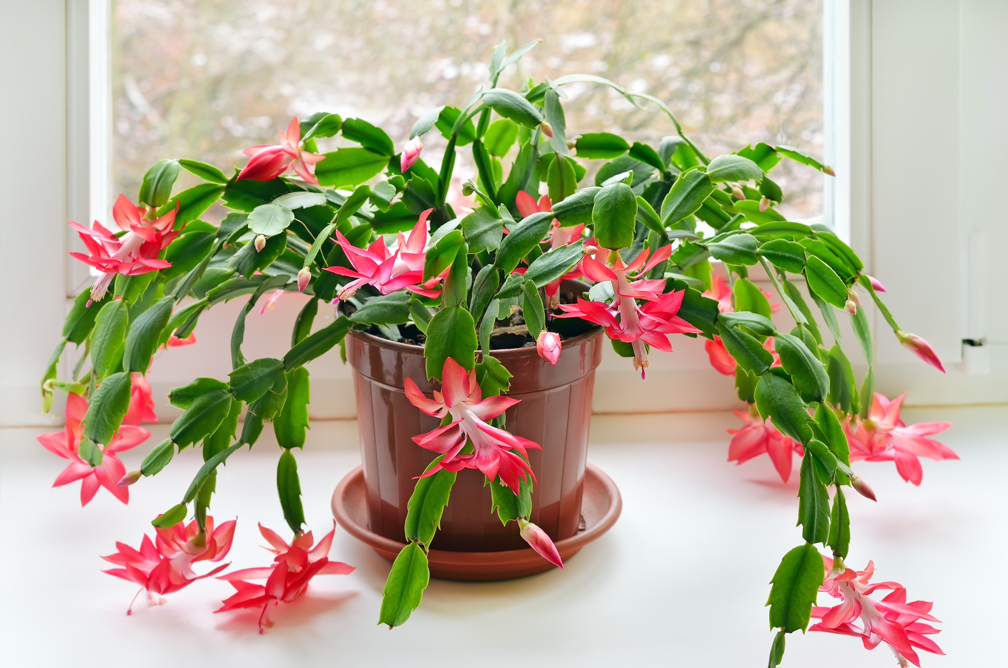
Often simply labelled as ‘Christmas Cactus’, they tend not to be sold as specific varieties, but simply differentiated by their flower colours of either red, pink, purple or white.
However, newly introduced varieties are now available with multicoloured blooms, such as the S. ‘Tricolour’ which resembles a miniature decorated Christmas tree with its red, pink and white flowers.
Growing From Seed
Christmas cacti can be grown, although not very easily, from seed.
However, growing from seed can be a very rewarding and cost-efficient way of growing plants for free.
To grow from seed, the seed can either be purchased online or harvested from a parent plant.
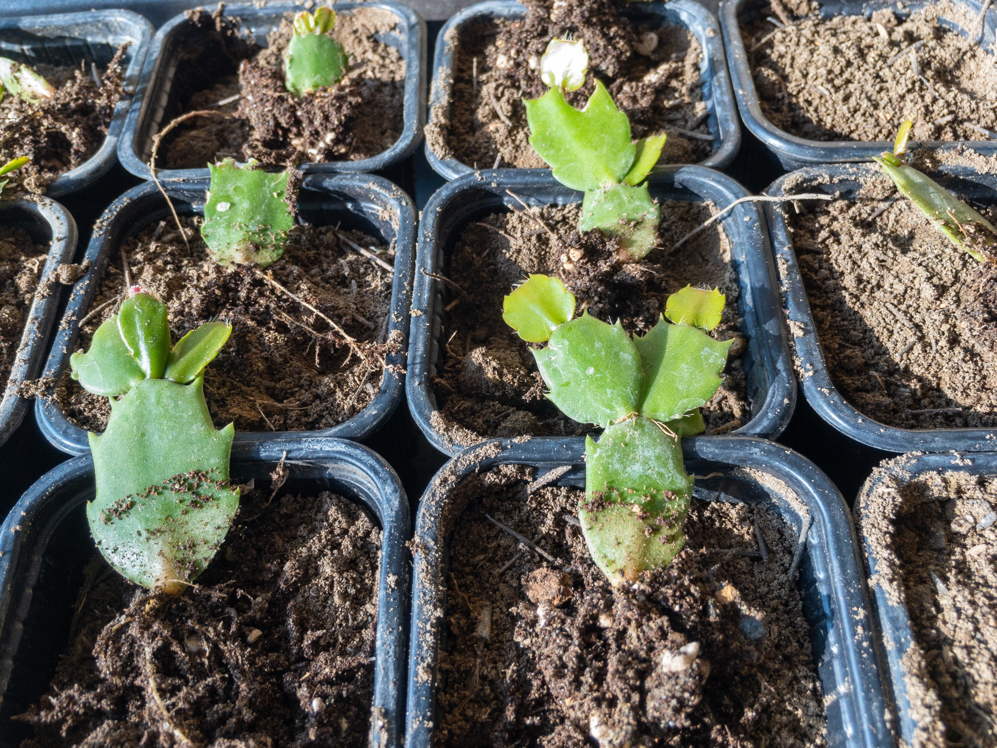
To produce your own seed, the parent plant flower, if not a self-fertile variety, needs to be pollinated either by another Christmas cactus plant or from another flower on the plant.
To pollinate the flowers, use a small clean brush or cotton bud to collect the pollen from one flower and gently transfer it onto the stigma of another flower and vice versa.
If pollination is successful, the base of the flower will swell and produce a small fruit full of seeds, which after several months will come away easily from the plant and the seeds can be removed.
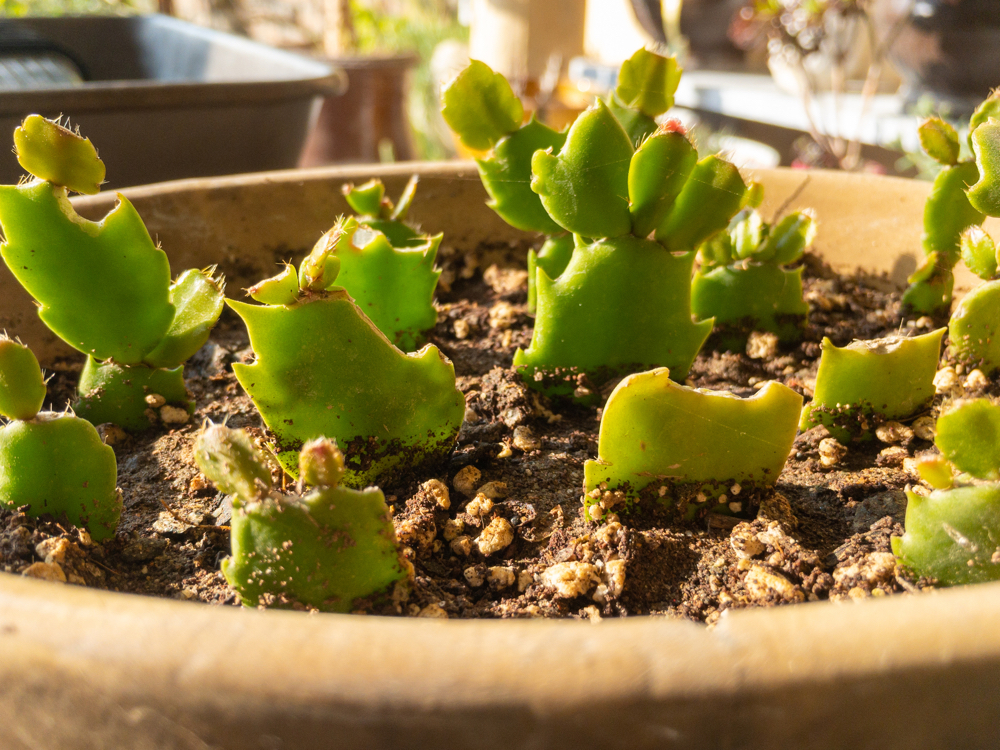
To sow the seed, sow thinly using a free-draining seed compost and water from below.
Cover with a clear plastic bag for 8-12 weeks to reduce moisture loss and keep at a minimum temperature of 21°C.
Once seedlings are of a size suitable to handle, carefully pot them on and continue to grow in a warm and humid environment.
Planting Guidelines
A Christmas cactus is a great houseplant to have on display, especially when in flower.
However, they do like certain conditions to grow well, look their best and flower successfully.
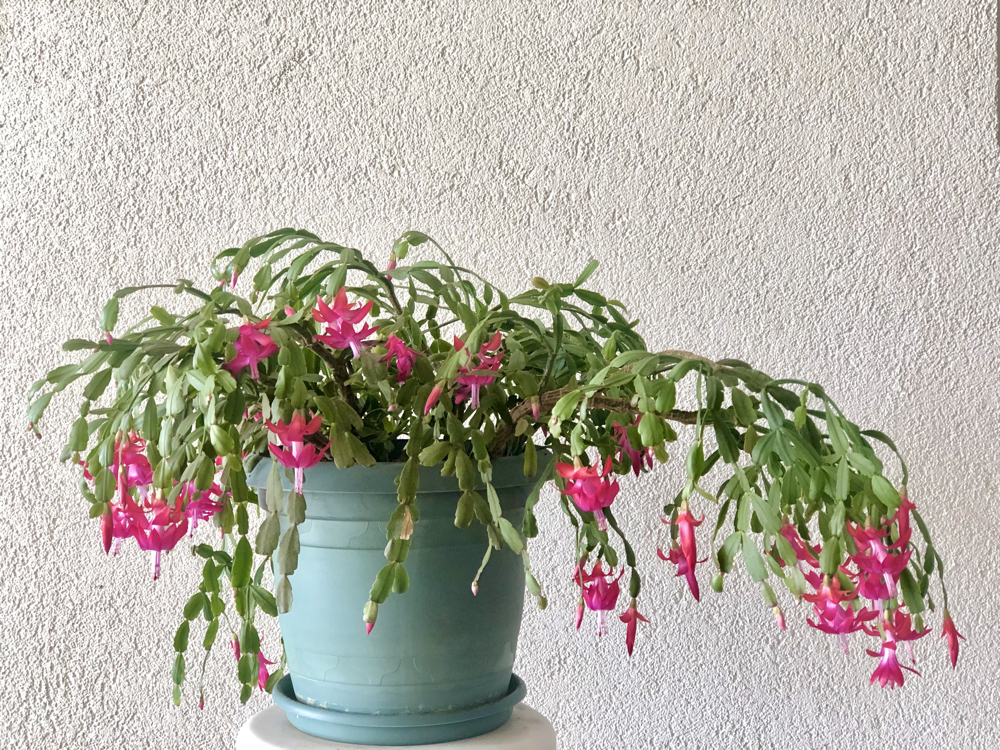
Christmas cacti like a humid atmosphere, so a warm kitchen, sitting room or bathroom is ideal.
Beware of cold and draughty windowsills though, as nighttime temperatures can drop suddenly and cause shock to the plant.
Christmas Cactus Care
Watering
From April until September, the Christmas cactus goes through a growing season when watering will need to be increased from other times of the year and the soil kept moist.
Christmas cacti go through a rest period of 2-3 months after flowering and during this time watering can be reduced, although not to the point of the soil being allowed to completely dry out.
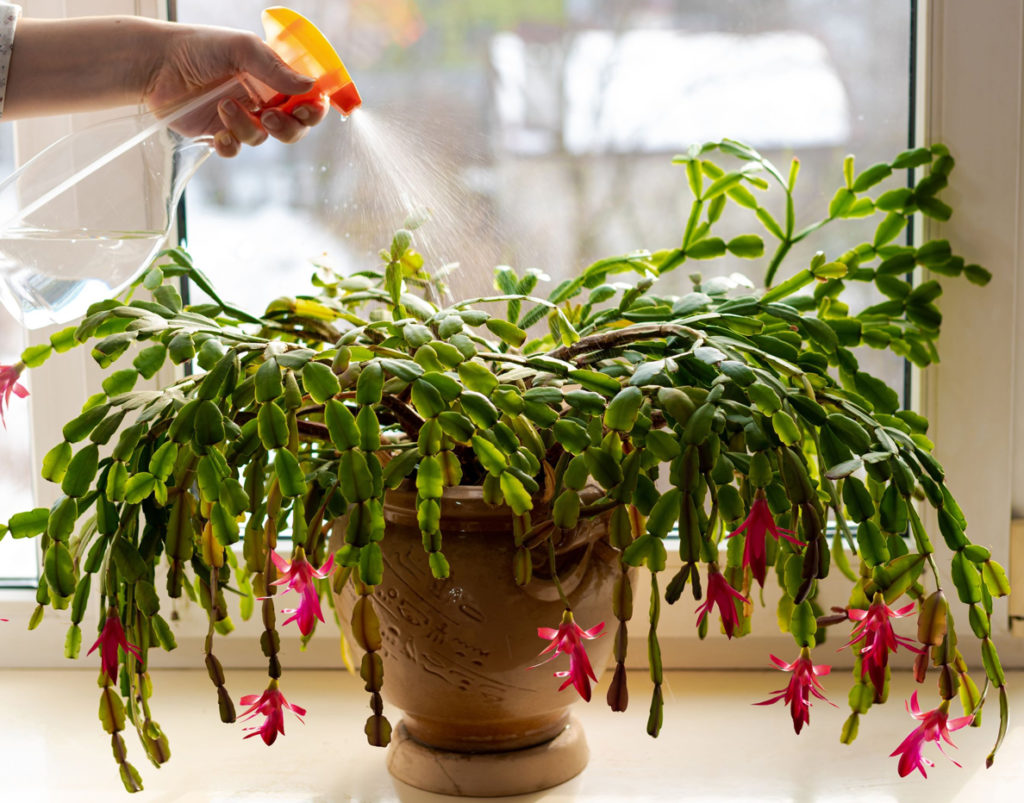
As a general tip, it is recommended to wait until the top 2cm of the soil is dry before watering again.
Sunlight Exposure
Originating from shaded forests, it is important to keep a Christmas cactus away from harsh and direct sunlight, yet not in complete shade either.
Near an east-facing window is ideal, as it will only receive the morning sun and be sheltered from the strong midday light.
In order to get the best flowers from your plant, it can sometimes be necessary to place it in complete darkness each night for 8 weeks from September, to encourage the flower buds to form.
Humidity & Temperature
Christmas cacti can be rather fussy when it comes to temperature and humidity.
When the plants are actively growing from April to September, they require a constant temperature of ideally 18-21°C, so can be placed outside during the warmer months.

However, for the rest of the year, they are generally happy at around 12-15°C.
Coming from a more humid climate, Christmas cactus prefer a higher humidity level if possible.
This can either be provided by regular misting, placing in a more humid room such as a bathroom or kitchen or by placing on a bed or tray of pebbles which are kept wet.
Pruning & Training
Christmas cacti plants don’t require regular pruning.
However, they can become rather leggy over the years, so pruning can help prevent this and create a bushier habit.
The correct time to prune is right after the plant has finished flowering and before it is coming into the growing season.
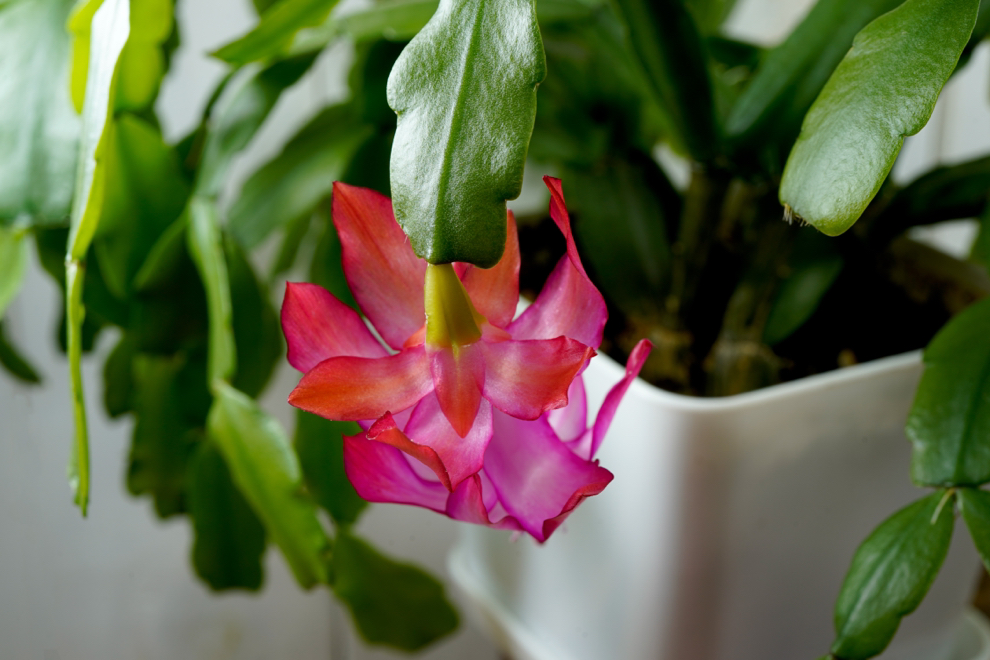
To prune, simply remove a segment or two from each stem, either by twisting or cutting using a clean and sharp pair of secateurs.
“Schlumbergera grows well only in one room in my house, the kitchen, where the light levels and moisture seem to suit it,” shares Horticultural Consultant Colin Skelly.
“However, the space in which it grows is limited, meaning that I have to prune it annually to keep it within bounds. Being able to remove selective segments means that the appearance of the plant is never harmed.”
These removed segments can then be used for cuttings, as discussed later.
Fertiliser
To encourage as many flowers as possible it is recommended to feed the plant with a high-potash feed, such as a tomato fertiliser, every month whilst it is actively growing between April and September.
Encouraging More Blooms
From September onwards the flower buds can begin to appear.
At this point, watering can be slightly reduced and the plant kept somewhere slightly cooler and with total darkness at night until all buds have formed.
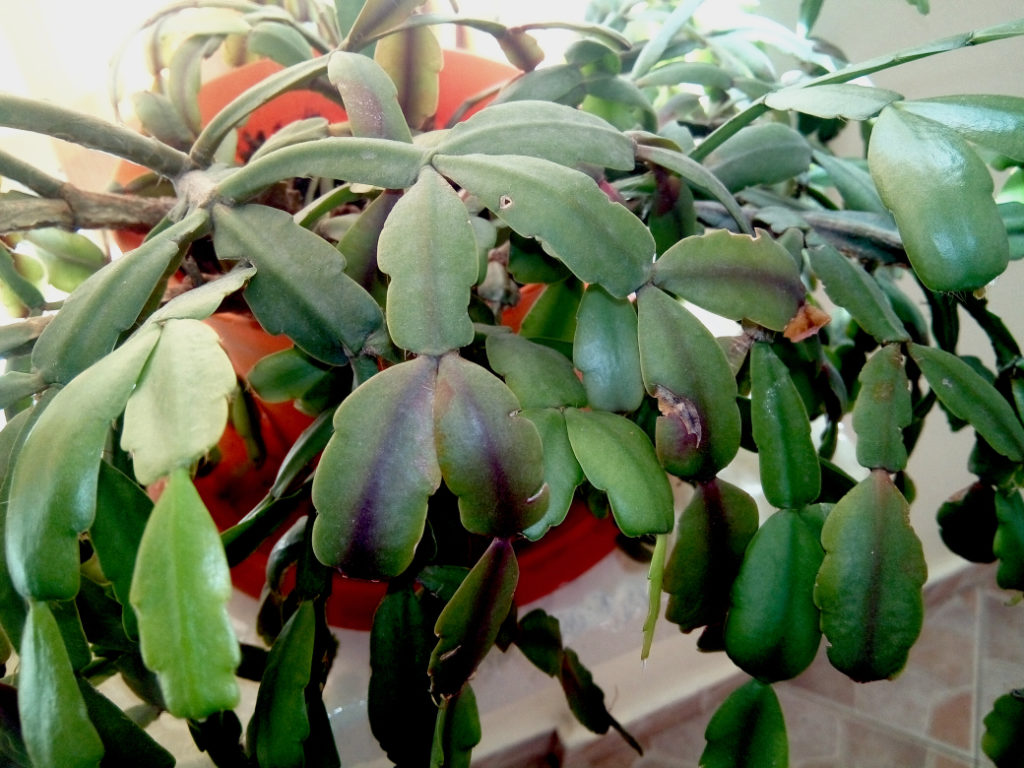
After this period and once moved back to an environment of 18 – 21°C, try not to move the plant as the buds are rather precocious and can drop before opening.
Cuttings
If the thought of growing from seed appears to be too much, then thankfully Christmas cacti can easily be reproduced by taking cuttings.
In late spring remove a section of the stem which includes 2-3 segments and leave it to dry for 48 hours.
Insert the cutting into a free-draining mix of seed compost to a depth of only 1cm (any more and the cutting may rot).
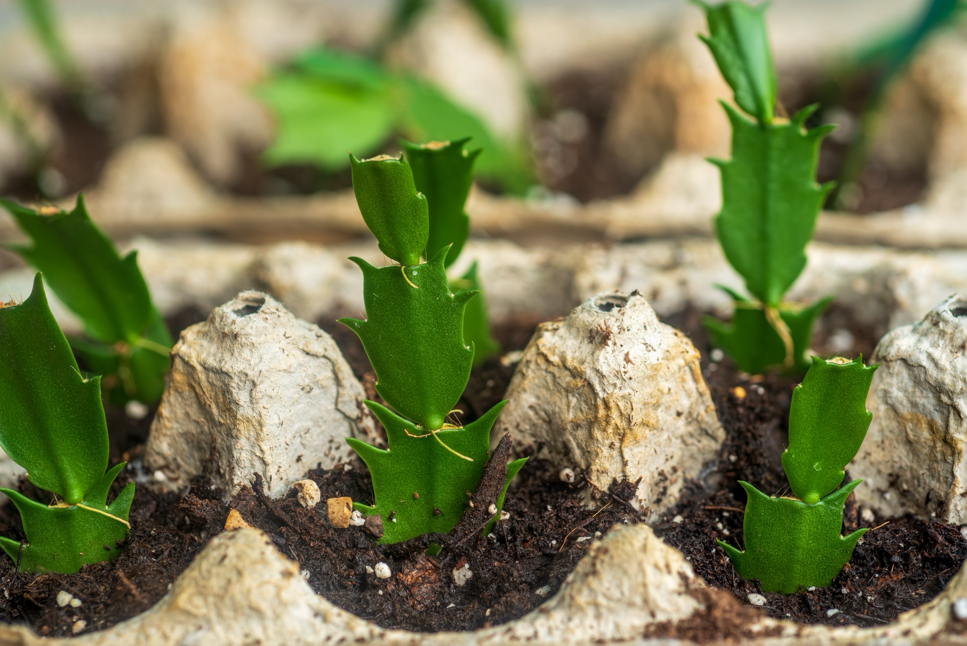
Keep the soil barely moist and place it out of direct sunlight at a minimum temperature of 18°C.
Once rooted, usually after 4-8 weeks, they can be potted up and grown on.
However, it may be a few years until the plants bloom successfully.
Potting & Repotting
Christmas Cacti tend to grow at an average rate.
However, to promote healthy growth, it is advisable to repot them on an annual basis.
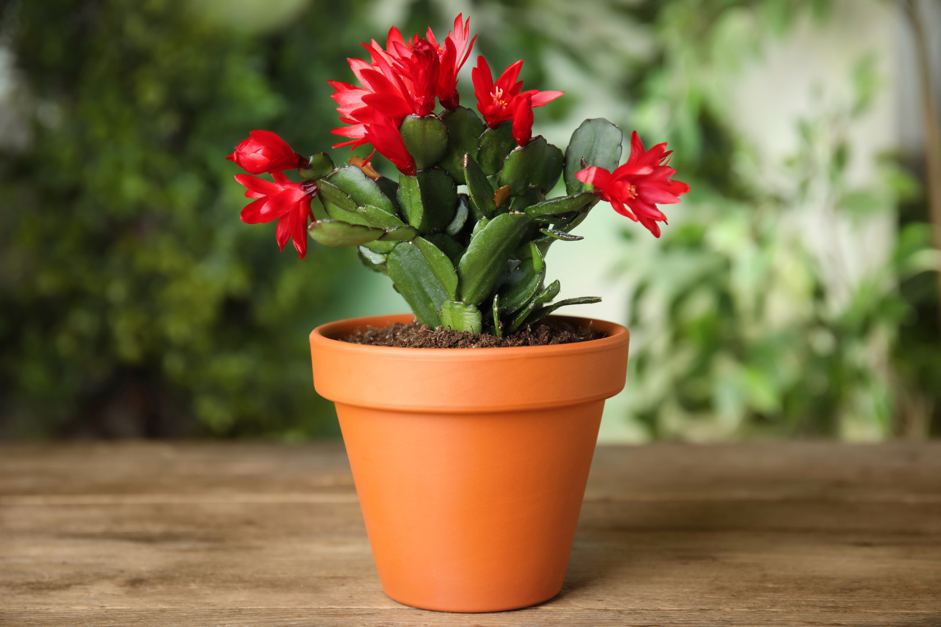
The best time to repot a Christmas cactus is in April when the growing season is beginning.
To repot, choose a container only one size up and use a specific cactus soil mix or a loam-based mix with added grit to increase drainage.
Common Problems
Stunted Growth
Christmas cacti generally grow steadily without too many problems.
However, poor growth can be caused by trying to grow them in a pot that is too large as they prefer their roots a little constricted.
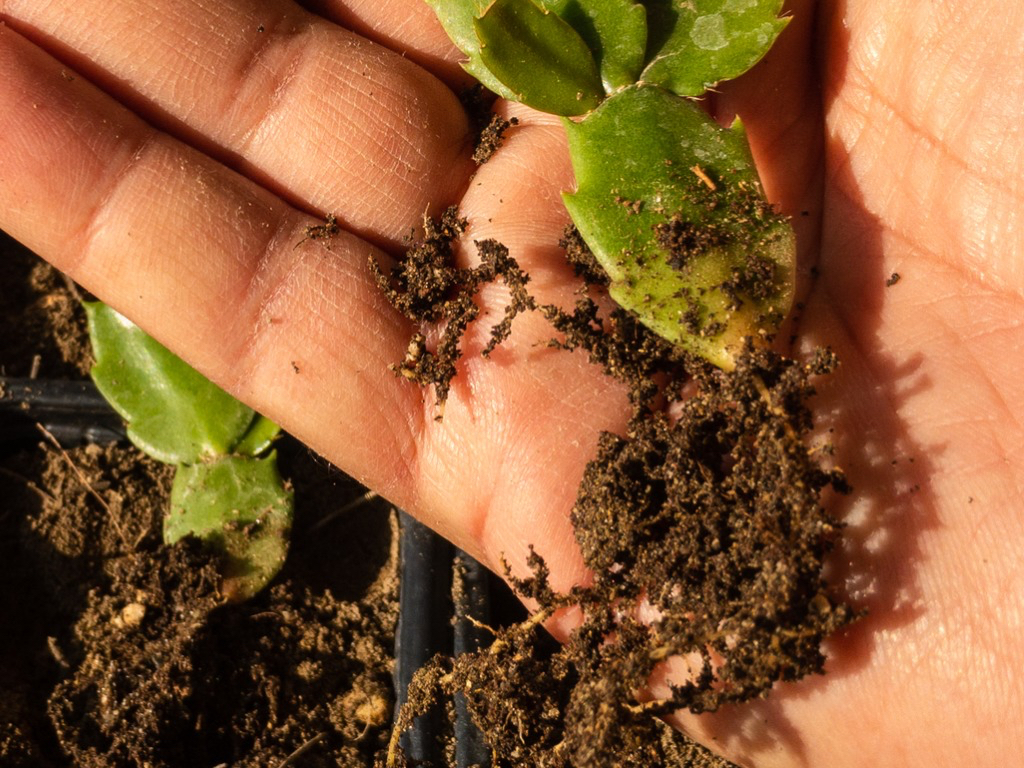
If in doubt, check the plant’s roots and if no new growth is shown, try repotting the cactus into a pot one size smaller to see if this stimulates more growth.
Limp Leaves
Limp leaves or stems can be a sign that the plant is receiving too much or too little water.
Remove the plant from its pot and if any black roots are displayed; these can be trimmed off and the plant repotted using fresh soil.
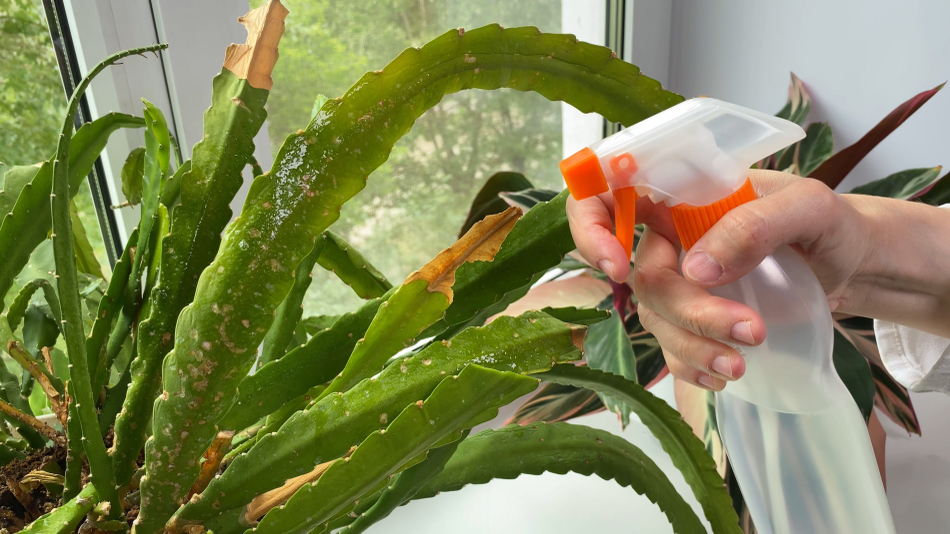
If the root system appears healthy, it may be possible that the cactus is not receiving enough water.
This can be addressed by watering a little more than previously so the soil is slightly moist.
Discoloured Leaves
If the leaves begin to turn from their fresh green to red or brown then it may be a sign that the plant is experiencing too much direct sunlight and needs to be moved to a more shaded spot.
It can also be a sign that the plant is not receiving enough water.
References
- 1Cactus from the Rainforest: Christmas Cactus. (2021, November 26). The Real Dirt Blog. Retrieved March 23, 2023, from https://ucanr.edu/blogs/blogcore/postdetail.cfm?postnum=50947
